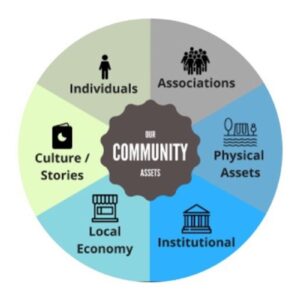
How did the United States get into the civic fix it finds itself in?
It seems as if big business is running the country unchecked—reaping record profits, even as Main Street grinds to a halt and the gap between the poorest and the richest is as great as it’s ever been.
It seems that the very concepts of democracy, the rule of law, science, and the role of government to create opportunity for all are being trashed and negated.
There are many reasons for this shift, but one of them, certainly, involved a lawyer’s memo, written in 1971 by an attorney in Richmond, VA, named Lewis Powell. And in the story of that memo is a potential lesson for nonprofit advocates today.
What Was the Powell Memo?
Robert Reich, the former US labor secretary, in a recent article titled “How a single memo gave us the disaster that is President Donald Trump,” wrote:
On August 23, 1971, less than two months before he was nominated to serve as an Associate Justice of the Supreme Court of the United States, Lewis F. Powell Jr. wrote a memo to the U.S. Chamber of Commerce. It was titled “Attack On American Free Enterprise System” and it outlined ways in which corporate America should defend and counterattack against “disquieting voices”—environmentalists, consumer advocates, civil rights groups, and labor unions.…
Corporate America duly followed Powell’s advice. An entire corporate-political complex was born, including tens of thousands of lobbyists, lawyers, political operatives, and public relations flacks.
You can read the full memo here. Former US Senator Sheldon Whitehouse wrote a book called Captured: The Corporate Infiltration of American Democracy, which recounted “how corporations buy influence over our government.” He dedicated a full chapter to the Powell memo and noted that it was swiftly embraced by US business leaders.
Whitehouse documented the political might of American business and the increasingly pro-business decisions of the US Supreme Court under the influence of Justice Powell (who served until 1987):
The results of this meld of political ambition, ideological positioning, and activist judicial appointments have been terrible….The mainstream of American law has been shifted steadily to the right by the force of this effort, backed by seemingly endless corporate funds. This new “rights movement”—for the rights of corporations, the rich, the powerful, and the fortunate—has been aggressive and explicit (76).
A memo to [the nonprofit sector] today must sound a call to arms and get nonprofits energized to respond creatively.
Powell’s memo was headlined “Attack on American Free Enterprise System.” Perhaps a 2025 memo to nonprofits could be titled, “Answering the Attack on American Democracy, Rule of Law, and Freedom of Expression.” It should come from a well-known civic leader of a national organization that serves our nonprofit and service sectors.
What should this memo contain? Powell’s 1971 memo offers a possible roadmap for a nonprofit memo today.
Getting People Agitated and Energized
The Powell memo started with a bang: “No thoughtful person can question that the American economic system is under broad attack…the assault on the enterprise system is broadly based and consistently pursued. It is gaining momentum and converts.”
Powell went on to source the origins and key players—naming US universities and the media. He singled out activist lawyer William Kunstler and reformer Ralph Nader as wielding outsized influence.
The memo castigated the business sector for its lack of leadership. Powell wrote, “The painfully sad truth is that business, including boards of directors and the top executives of corporations great and small…have responded—if at all—by appeasement, ineptitude and ignoring the problem.”
Just substitute the word “nonprofits” for “business” and you have a painfully accurate description of the current state of play.
A memo today must sound a call to arms and get nonprofits energized to respond creatively. It ought to name names and be unashamed to call out the leaders who are burning our civic house down and the people who are paying the bills to get it done.
Focus, Priority, Resources
The Powell memo challenged the leaders of the business sector to step up. In his words, “The first essential—a prerequisite to any effective action—is for businessmen to confront this problem [the supposed attack on the free enterprise system] as a primary responsibility of corporate management.”
The memo demanded that US business act as if its house were on fire and to focus all necessary talent and resources on a counterattack, to shore up capitalism. For Powell, it was not enough to just do business—a responsible business leader must also be about lifting up and protecting the very nature of commerce. Powell suggested that a national organization with heft, history, and staffing be the leader in this fight—namely the US Chamber of Commerce—calling for increasing funding to the chamber so that it could handle this new urgent responsibility.
This is a long game, and we are very late to the dugout.
A nonprofit memo today must challenge the sector in a similar no-holds-barred manner. Who will step up and take on this role? Will funders answer the challenge and fund this work robustly and resolutely? Powell challenged US business to pitch in and contribute heavily to the chamber and this project. We need a similarly robust challenge today to nonprofit leaders, donors, and funders.
Campus Organizing, Developing Pedagogy
The Powell memo laid out the role of US universities in what he saw as a broad-based attack on capitalism and called on business to fund its own university research, develop course curricula, write op-eds, and more to change the national conversation about the role of business.
A nonprofit memo ought to call for something like mandatory arts, civics, and public policy classes at all training programs for creative professionals. It might sketch out some first principles that knit creativity, democracy, and economic progress together. It should seek to eliminate crony capitalism while also creating space and resources for models that operate differently—such as co-ops, a public bank, and other civic innovations.
Movement Building and Politics
This is a long game, and we are very late to the dugout. Powell wrote his memo some 54 years ago, “This is a long road and not one for the fainthearted,” he noted. Powell went on to advocate for massive efforts to shape public opinion through popular media, television, and paid advertising.
Nonprofits today have a similar challenge—only now we have to add social media to the pot. Our memo must call for movement building over years—likely decades.
To me, the heart of the Powell memo was his entreaty to get political. Powell did not mince words: “Business must learn the lesson long ago learned by labor and other self-interest groups. This is the lesson that political power is necessary; that such power must be assiduously cultivated; and that, when necessary, it must be used aggressively and with determination.”
A nonprofit memo today must blow this trumpet loudly and compellingly.
Decade after decade. Hundreds of millions of visits to our theaters, galleries, museums….And what did we do with all that connection, that potential for deepened civic engagement? Nothing.
Powell pointed out the impact of galvanizing America’s stockholders, which, at that time, he estimated to be 20 million Americans: “The question which merits the most thorough examination is how can the weight and influence of stockholders—20 million voters—be mobilized to support (i) an education program, and (ii) a political action program.”
In 1991 I asked Arthur Levitt, the publisher of the monthly theater magazine Stagebill, to give me a page in every program he published to run a monthly column with contributions from experts to enlighten theatergoers on the role of creativity in the life of the nation. The offer was declined.
This missed opportunity still haunts me. According to the National Endowment for the Arts report Arts Participation Patterns in 2022, some 48 percent of all US adults—that is a staggering 122 million people—attended at least one arts event in person that year!
Think of it. Year after and year. Decade after decade. Hundreds of millions—possibly billions—of visits to our theaters, galleries, museums.
And what did we do with all that connection, that potential for deepened civic engagement? Nothing. Our cultural sector’s total message to our most treasured constituents was simply, “Visit me.”
A nonprofit memo written today must note this and offer solid suggestions on how to leverage tens of millions of annual visits of patrons, clients, and supporters.
Powell concluded with this mandate. “Business has shunted confrontation politics….It is essential that spokesmen for the enterprise system—at all levels and at every opportunity—be far more aggressive that in the past.”
What Now?
How about it, Americans for the Arts? Are you up for this Independent Sector or National Council of Nonprofits?
Who will rally nonprofits to fight for democracy, creativity, freedom of expression, the rule of law, compassion, and service?
Who knows? If you are good at this, a seat on the US Supreme Court may await you.














